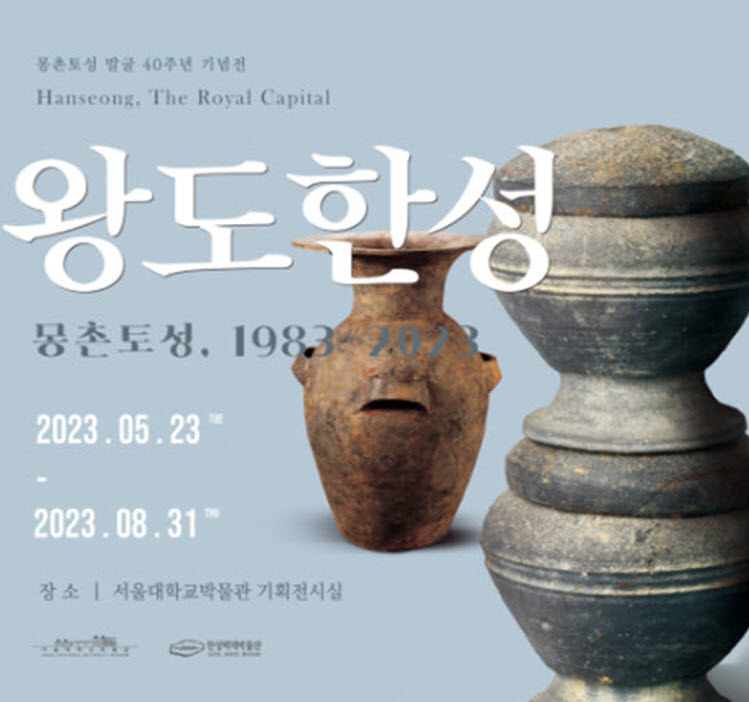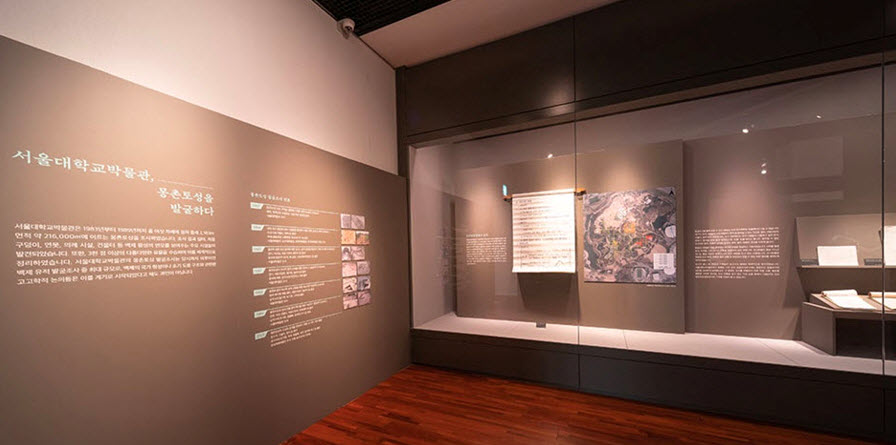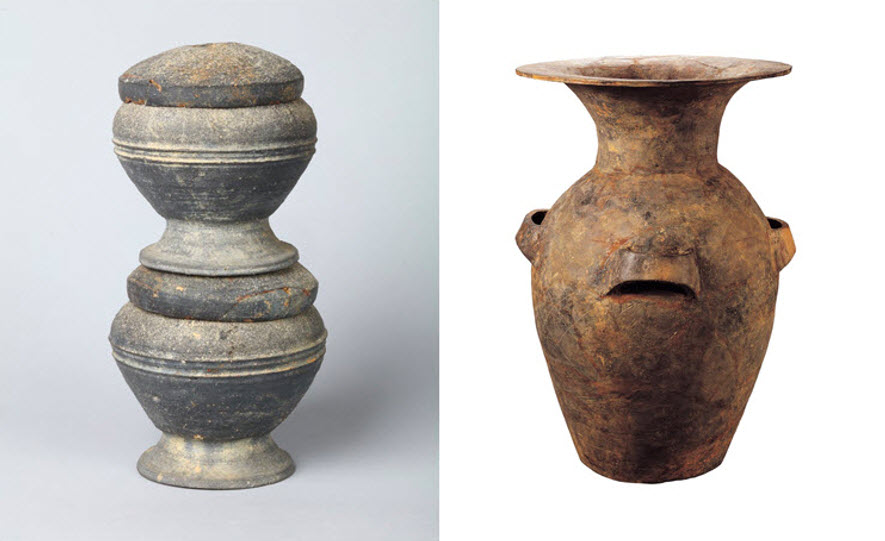
The poster of the exhibition “Hanseoung, the Royal Capital”
In 1983, significant remains of Baekje, an ancient kingdom that governed the southwestern part of the Korean peninsula between 18 BCE to 660 CE, were discovered during the construction of the Olympic Park in Bangi-dong, Songpa-gu. These artifacts were from Baekje’s period of ruling Hanseong, or modern-day Seoul.
At the time of discovery, the SNU Museum played a central role in the excavation. The special exhibition “Hanseong, the Royal Capital” was organized to commemorate the 40th anniversary of the excavation. The exhibition summarizes the significance of the excavation and the historical importance of Mongchontoseong, the fortress that was the excavation’s central discovery. The exhibition also vividly conveys the appearance of Hanseong-period Baekje through maps and artifacts. The exhibition is being held at the university museum’s second-floor exhibition hall until August 31.

SNU Museum’s Excavation Records
The museum’s excavation records
Upon entering the exhibition hall, visitors are met with a large sheet of paper approximately one meter in height, densely filled with handwriting. This is the “excavation survey chart,” a record from 1985 of the museum’s excavation of Mongchontoseong. The museum embarked on the survey in 1983 and continued research until 1989. The records of the site were compiled into five volumes of excavation reports. The SNU survey holds significance as a contribution to the identification of the location and structure of Hanseong, Baekje’s first capital. The survey has proven to be foundational for archaeology research on early Baekje.
Exploring Hanseong-period Baekje and Mongchontoseong through excavated artifacts
The exhibition consists of four sections. The first and second sections depict the landscape of Hanseong and the lives of the Baekje people in the Mongchontoseong area. Traces of Hanseong can be found in earthen fortifications, villages, and royal tombs near Mongchontoseong. In addition to Mongchontoseong, the SNU Museum conducted surveys in the vicinity, spanning the Seokchon-dong burial cluster, Amsa-dong archaeological site, Hanam Misa-ri archaeological site, and Pungnap earthen fortifications. The exhibition also includes gold earrings, gold waist belt ornaments, and pottery artifacts from these sites, providing a glimpse into life in Hanseong during the Three Kingdom period.
The third section traces Baekje’s interactions with other societies. Artifacts found in Mongchontoseong include those from Gaya, China, and Japan, revealing a history of active cultural exchange. On the other hand, weaponry such as arrowheads and armor made from bones hints at the military tensions of the era. Eventually, Hanseong was conquered by the rival kingdom of Goguryeo. The final section focuses on changes in Mongchontoseong after the fall of Hanseong. The Mongchontoseong area continued to be a living space for people throughout the Goguryeo, Silla, Goryeo, and Joseon periods, explaining why artifacts from various eras were also found in the excavation.

A jar with a lid (left), a four-eared jar from Goguryeo (right)
After visiting the exhibition, Lee Yoojin (School of Dentistry) commented “It was fascinating to see Mongchontoseong, which I’ve only read about in history books. I’m proud of the SNU Museum for the important role that it played in the excavation.” While the Mongchontoseong excavation is now led by a dedicated body, the Hanseong Baekje Museum, the SNU Museum continues to play an important role, for example through its classification of unreported artifacts and its publication efforts. Museum curator Jungeun Lee remarked, “I hope visitors will discover that the Mongchontoseong site has been known and surveyed for a longer period of time than they might have thought, and that research is still ongoing.”
Since its establishment in 1946, the SNU Museum has been contributing to cultural heritage preservation and historical research. Through its three permanent exhibition halls - the Archaeology and History Hall, Traditional Art Hall, and Anthropology and Folklore Hall - the museum exhibits artifacts of scholarly significance. Noteworthy artifacts include a prehistoric stone ax from Jeongok-ri, Yeoncheon, the replica of the Gwanggaeto Stele, and works by artists Gim Hongdo and Jang Seung-eop. The museum welcomes visitors from Tuesday to Saturday with operating hours from 10 AM to 5 PM.
SNU Museum website: https://museum.snu.ac.kr/eng/
Source: https://www.snu.ac.kr/snunow/snu_story?md=v&bbsidx=142766
Written by Jaeyong Lee, SNU English Editor, moonn6pence@snu.ac.kr
Reviewed by Professor Jiewuh Song, Department of Political Science and International Relations, jiewuh@snu.ac.kr

